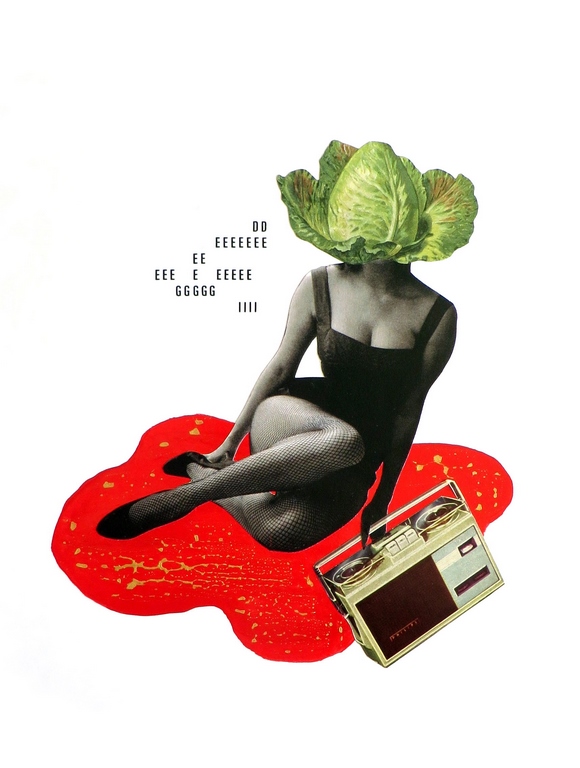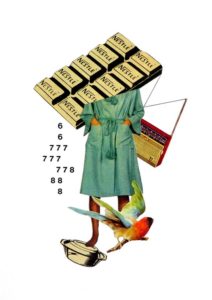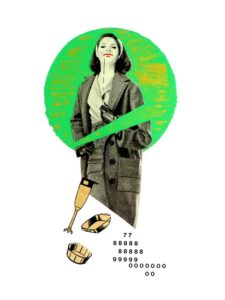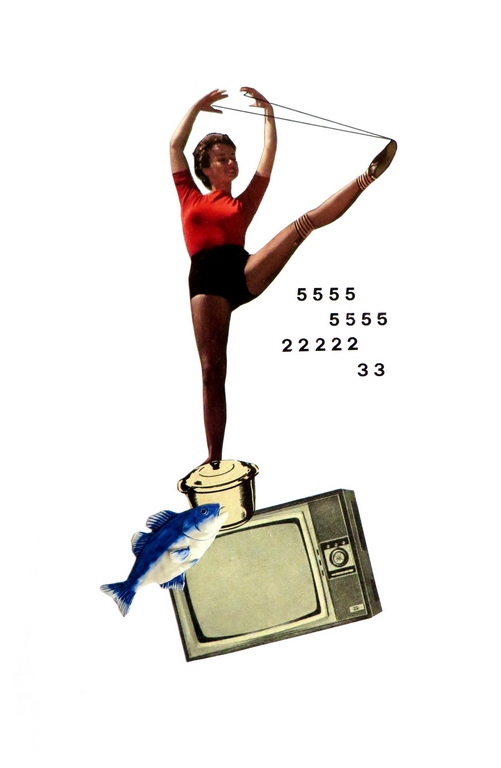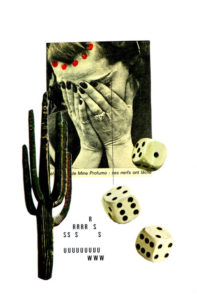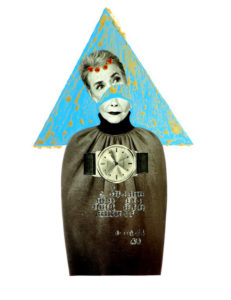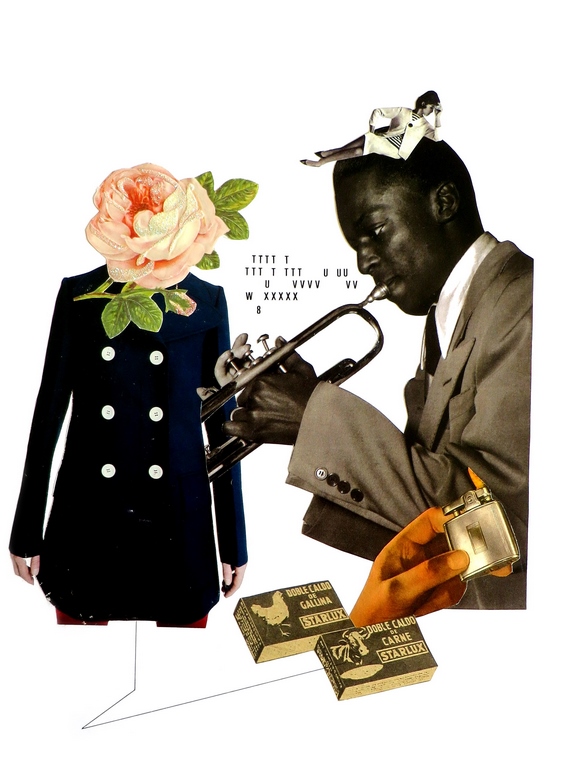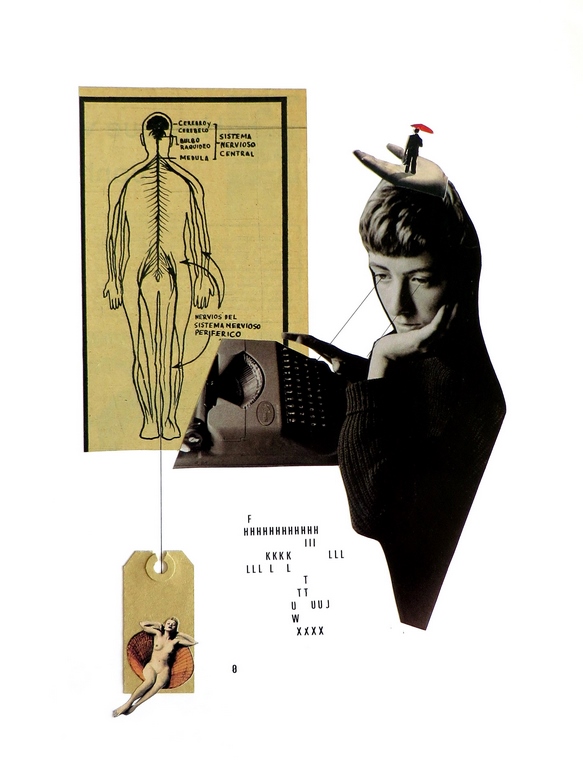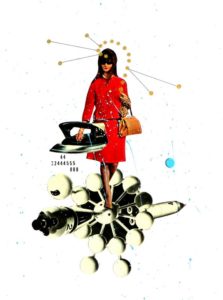MUS.A.S

‘¡Ea, tú! Comencemos por las Musas que a Zeus padre con himnos alegran su arrogante corazón dentro del Olimpo, narrando al unísono el presente, el futuro y el pasado’.
(Hesíodo, Teogonía)
Pasado, presente y futuro se unen entre los recodos de las casas andalusíes del Museo Siyâsa de Cieza. Donde nueve musas particulares van a tener, durante unos días, su templo, su museion. Para la artista Miriam Martínez Abellán, la representación de estas deidades ya nada tiene que ver con la imagen que forjaron los autores griegos, así que los atributos de cada una difieren bastante de los papiros, cítaras, bolas terráqueas y laureles de antaño, siendo sustituidos por elementos propios del consumo doméstico actual: planchas, aspiradoras, ollas a presión o radio casetes. En la intención de la autora, como uno puede deducir del irónico título de la exposición, ya no está la imitación de los cánones de belleza helenos, sino una nueva representación que persigue la sorpresa del espectador, mezclando imágenes extraídas de contextos totalmente distintos. Todo ello con el aire vintage que caracteriza retrospectivamente su obra y que se desprende, en este caso, de la cuidadosa selección de recortes extraídos de revistas europeas de los 60, en las que la ropa, los cortes de pelo y hasta la pose de las modelos generan ese toque característico de una estética que se está rescatando, cada vez más, en la actualidad.
Estas imágenes ganan en plasticidad con los tonos azules y dorados predominantes en los trazos de acrílico y esmalte sintético, que salpican el fondo de los collages, en una suerte de técnica mixta. Colores de alto octanaje simbólico, que nos traen a la mente la idea de lo sagrado e inviolable, en relación con la figura femenina; pero también el rojo sangre, que nos habla del vitalismo y la lucha, o el verde del equilibrio y la esperanza futura.
La mujer, centro de todas las creaciones expuestas, ha pasado de ser fuente de inspiración a convertirse en actriz de su propia existencia, las musas han descendido de las cumbres del Parnaso a la cotidianeidad de la calle. Y es que las MUS.A.S que nos vamos a encontrar en Siyasa son chicas anónimas, pertenecientes a una sociedad gregaria y mecanizada, como se intuye por las series alfanuméricas que dan unidad a las obras y semejan los códigos de barras de la modernidad neoliberal.
Un homenaje, por tanto, a la mujer actual y una crítica a la sociedad de consumo, que pretende convertir nuestro potencial creativo en una pasividad puramente mercantil. En este sentido, el planteamiento didáctico que sustenta la exposición entraña una defensa de la necesidad educativa y social del arte y de la cultura. Una urgencia, al observar cómo se pretende sustituir el desarrollo de la libre inspiración de nuestros jóvenes, por una formación programada desde el poder, para ocupar un rol predeterminado dentro de un sistema en el que la creatividad cuenta menos que la productividad.
El espectador podrá ir descubriendo activamente las siete instalaciones conceptuales de las que consta la exposición y el audiovisual collagexmiriam, realizado por Alberto del Castillo (@casifilms).
Fernando Cuadrado Mulero
Collage analógico, tinta y acrílico sobre tabla
40 x 31 cm

‘Hey, you! Let’s start with the Muses that make Zeus father’s arrogant heart inside Olympus happy with hymns, telling in unison the present, the future and the past’.
(Hesiod, Theogony)
Past, present and future meet in the corners of the Andalusian houses of the Siyâsa Museum in Cieza. Where nine particular muses will have, for a few days, their temple, their museum. For the artist Miriam Martínez Abellán, the representation of these deities no longer has anything to do with the image forged by the Greek authors, so the attributes of each one differ quite a bit from the papyrus, zither, earth balls and laurels of yesteryear, being replaced by elements typical of current domestic consumption: irons, vacuum cleaners, pressure cookers or radio cassettes. In the author’s intention, as one can deduce from the ironic title of the exhibition, is no longer the imitation of the Hellenic canons of beauty, but a new representation that pursues the spectator’s surprise, mixing images taken from totally different contexts. All this with the vintage air that characterizes his work retrospectively and that can be seen, in this case, from the careful selection of clippings taken from European magazines from the 1960s, in which the clothes, haircuts and even the pose of the models generate that characteristic touch of an aesthetic that is increasingly being rescued today.
These images gain in plasticity with the predominant blue and golden tones in the traces of acrylic and synthetic enamel, which dot the background of the collages, in a kind of mixed technique. Colours of high symbolic octane rating, which bring to mind the idea of the sacred and inviolable, in relation to the female figure, but also the blood red, which speaks to us of vitalism and struggle, or the green of balance and future hope.
The woman, the centre of all the creations on display, has gone from being a source of inspiration to becoming an actress of her own existence. The muses have descended from the peaks of the Parnassus to the everyday life of the street. The MUS.A.S that we are going to meet in Siyasa are anonymous girls, belonging to a gregarious and mechanized society, as can be intuited from the alphanumeric series that give unity to the works and resemble the bar codes of neoliberal modernity.
A tribute, therefore, to today’s woman and a criticism of consumer society, which seeks to turn our creative potential into a purely commercial passivity. In this sense, the didactic approach that underpins the exhibition involves a defence of the educational and social needs of art and culture. An urgency, when observing how it is intended to replace the development of the free inspiration of our young people by a formation programmed from the power, to occupy a predetermined role within a system in which creativity counts less than productivity.
The spectator will be able to actively discover the seven conceptual installations of the exhibition and the audiovisual collagexmiriam, created by Alberto del Castillo (@casifilms).
Fernando Cuadrado Mulero
Analogical collage, acrylic on board
40 x 31 cm

